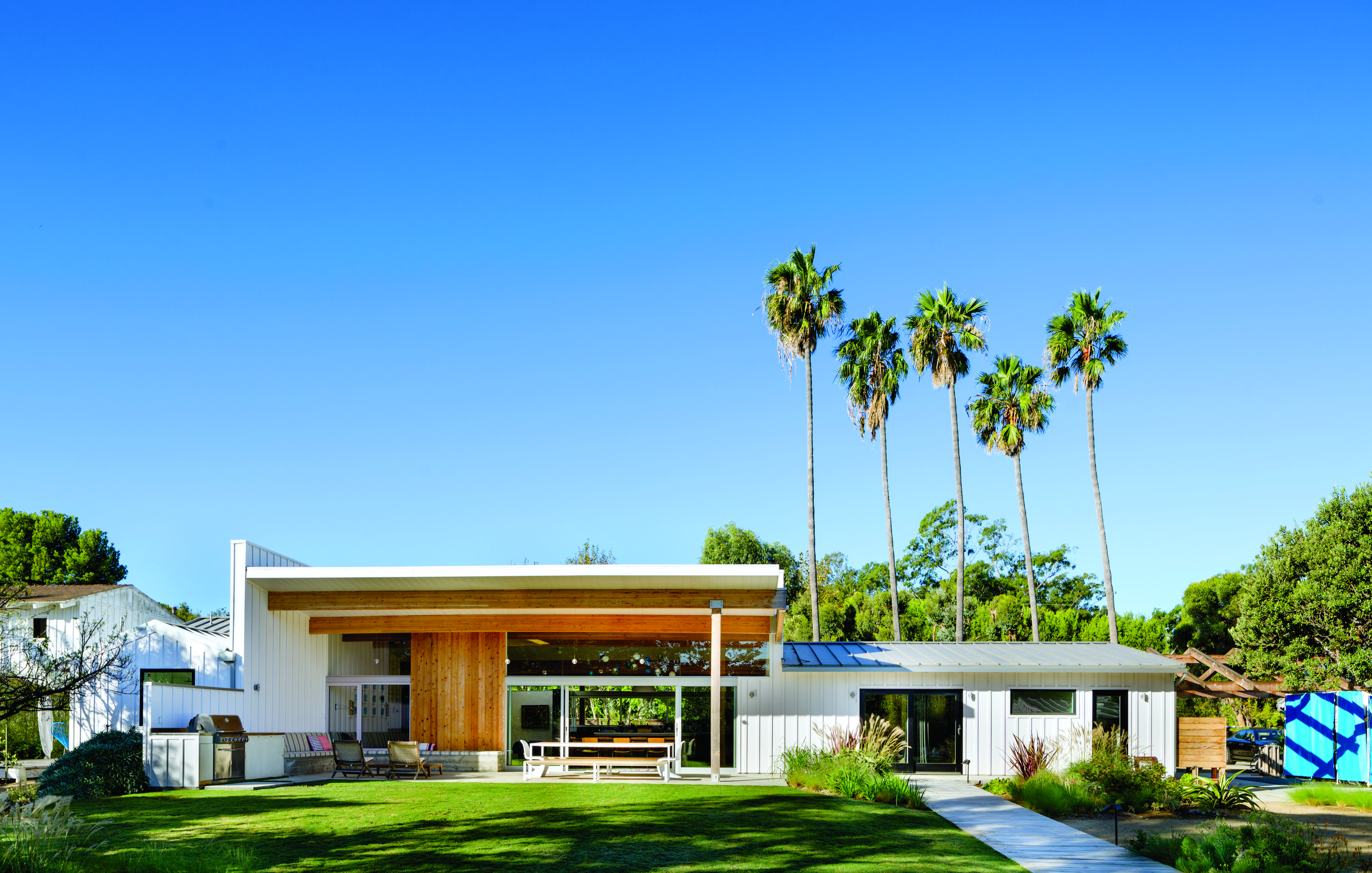
There is a formula for a successful TED Talk: scripted vulnerability plus one weird trick. The short lectures convey innovation in the speaker’s professional field, or direct the audience on a path to personal fulfillment. In Barbara Bestor’s TEDxOlympicBlvdWomen presentation from 2013, the Los Angeles–based architect does both. She recounts her divorce, in 2000, with raw emotion and disarming humor, citing a creative shift that followed the split. Ultimately, she advocates introspection over quick solutions. Bestor’s talk is not formulaic, and the corresponding video is not clickbait—at the time this story went to print, the clip was languishing at a few thousand hits. Yet we lucky viewers get to witness a TED Talk that is phenomenally charming. Bestor’s listeners seem almost surprised by their own laughter and cheering, which flows in a call-and-response throughout her time on stage.
As a practice, Bestor Architecture operates with the same openness. “It’s not ideologically driven,” Bestor says. “I don’t think we need a lot of reductivist rules governing what is okay or not okay.” As a result, she doesn’t feel like the member of a club. Yet a club of ardent members is beginning to organize around her. Founded in 1992, today her company employs 27, counts Hollywood risk-takers among its clients, and is expanding into commercial and cultural sectors. Hers may never be a household name, but Bestor’s low-key, why-not buildings are enrapturing a certain L.A. set.

The architect has continually bucked rules and categorization. Growing up in an academic family in Cambridge, Massachusetts, Bestor found herself drawn to architecture—the discipline practiced by her babysitting clients. The architects’ houses represented a range of design philosophies, but Bestor found herself drawn to the joyful, socially tangled methods of Design Research founder Ben Thompson. Years later, with the encouragement of Architectural Association chairman Alvin Boyarsky, who told her that L.A. was the “place to be,” Bestor did her graduate training at SCI-Arc. She was attracted to the polyglot quality of the City of Angels: you didn’t have to be a lawyered-up Miesian to get something built. Bestor lapped up city culture and discovered renegades farther afield, such as the Italian-Brazilian architect Lina Bo Bardi. Bestor designed the Bo Bardi exhibition now on view at the Palm Springs Art Museum.
Bestor’s crucible of influences, however, was not immediately apparent. Her early houses were relatively restrained, as if wry humor and revelation of structure were secondary to L.A.’s Case Study legacy. But the silver lining of her tough divorce was creative expression that aligned more closely with self-expression. Bestor recalls feeling shaken to the point of considering art school; instead, she plied her existing trade with no holds barred. “I found myself freed of some baggage, and reconsidering color and shape as viable ways to affect people’s experience of a place beyond spatial organization.” She swiftly converted a neglected cabin into a modest yet cheerful home for herself and two kids, and from that project, she has been fielding praise and new clients ever since.

As with most design studios, a good amount of this business is devoted to residences. But unlike most firms, Bestor’s commissions are consistently to die for. She has had the chance to conserve and update houses by one of her local heroes, John Lautner. “I would love to be as formally brave as he was,” she says. Her much-trumpeted house renovation for the Beastie Boys’ Mike D combines fearless flashes of color and pattern with more traditional architectural daring: reinventing the section, welcoming daylight, blurring indoors and out. Bestor has also exercised her skills with a social conscience thanks to the Blackbirds development, which squeezes 18 homes onto .82 acres of Echo Park with grace and charm. “It’s a little model for urban densification, which is one of the huge issues in L.A., where I want a seat at the table,” she says.
Unapologetic ambition is one way by which Bestor endears herself to her expanding circle of admirers. Her current sights are set on the cultural arena. She hopes to translate her experience to the sector not only from her construction of stores and offices, but also by efforts like the Palm Springs exhibition. On the larger scale, she converted a warehouse into the Silverlake Conservatory of Music, for which she conceived a village of performance pods within the historic shell. Bestor Architecture also is wrapping work on the new vineyard Ashes & Diamonds, whose winery and events venue “takes a slightly pop approach to ideas about California modernism, while also getting out of the trap of wineries identifying with European precedent.” Why not apply these projects’ exploration of urbanity and community exchange to, say, L.A.’s planning of the 2028 Olympic Games?
If Bestor experienced her first career breakthrough as an unselfconscious babysitter, today’s success is due to her self- assuredness. The architect explains that self-confidence comes from design method. Rather than impose idiosyncrasies on a project—which would be just another ideology, after all—Bestor says her firm listens to everybody. “It’s good to put people first,” she says. “Nowadays, we are literally competing against tiny screens for people’s attention 90 percent of the time, and I think people are dying to be in spaces where they can have an experience that is haptic and visual and cozy.” The cheering helps, too. “A lot of my insecurities are quieting because we’re doing something different,” Bestor adds, “and so far it’s turned out really well.”




